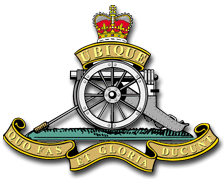LEATHERHEAD WAR MEMORIALS - WWII
Lance Sjt Francis Stubbs Flynn
2 Airlanding Anti-Tank Battery, Royal Artillery
Town Memorial World War II

Lance
Serjeant FLYNN, Francis Stubbs: 797719:
Age 33
2 Airlanding Anti-Tank Battery, Royal Artillery
Date of Death: Tuesday 19th September 1944
Son of John James Flynn and Frances Flynn; husband of Kathleen Sybil
Flynn, of Ashtead, Surrey.
Grave/Memorial Reference: Panel 1
Cemetery: GROESBEEK
MEMORIAL
2 Air Landing Anti-Tank Battery, Royal Artillery was part of the 1st Airborne Division which took part in Operation MARKET GARDEN, the air landings aimed at seizing the bridges at Arnhem.
There were two anti-tank batteries in the Division - essential units because the six parachute battalions contained no heavy anti-tank weapons. The lst and 2nd Airlanding Anti-Tank Batteries were both formed from pre-war Territorial Army units which had their homes in Barrow-in-Furness and Oban respectively.
The 2nd Battery had suffered a disaster when HMS Abdiel struck a mine in Taranto harbour and many men were drowned. To make up the battery's strength an airborne officer appealed for volunteers to a parade of artillery reinforcements at a camp in North Africa. Gunner George Hurdman describes the result: "Only one man, a Jew, stepped forward. The officer then walked down the ranks selecting the required fifty of the fittest-looking men and these were sent to the battery. I never regretted it for one moment; it was a fantastic mob to be in."
The original establishment of each battery was four troops, each of four 6-pounder guns, but there had been a recent reorganization. A larger and more powerful gun, the 17-pounder, had been developed to counter the growing thickness of German tank armour, and it had been found possible to carry one of these guns and its towing vehicle in the new Hamilcar glider. One 6-pounder troop had been converted and three extra troops had been formed for this new gun. This development took place only just before Arnhem; the Germans did not know that the 17-pounder was capable of being glider-borne and would be much surprised by its appearance at Arnhem.
2nd (Oban) Air Landing Anti-Tank Battery, Royal Artillery (Major A F Haynes, POW). Based at Harrowby. Flew in 24 Horsas from Blakehill Farm and 8 Hamilcars from Tarrant Rushton. Went in: 168 men; died 25; evacuated 27; missing 106.¹
Sources
1. Arnhem 1944 - The Airborne Battle, Martin Middlebrook
Links
2nd (Oban) Air Landing Anti-Tank Battery, Royal Artillery
the website editor would like to add
further information on this casualty
e.g. a photo of him, of his name on the Groesbeek Memorial
and of any recollections within his family
last updated 29 Jul 2004: 10 Feb 14: CWGC link updated 7
Nov 17